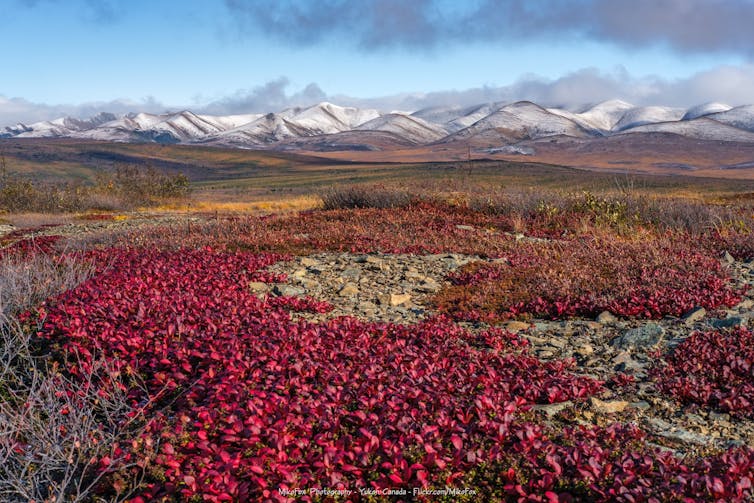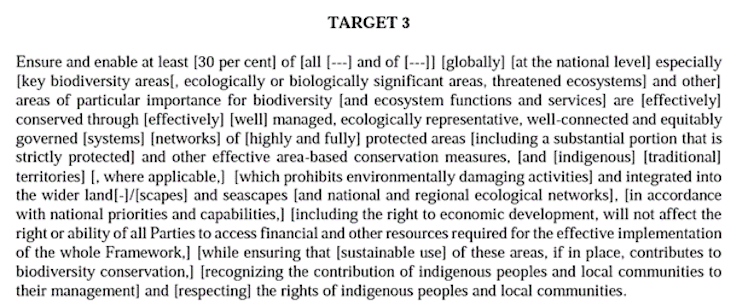December global biodiversity summit at risk of failure
Rarely does a week go by without a new scientific study addressing the deteriorating condition of life on Earth

Estimated reading time: 11 minutes
Justina C. Ray, University of Toronto
Globally, with more than 70 per cent of land and sea having already been significantly altered by humans, one million species are threatened with extinction. An alarming number of ecosystems are already exhibiting evidence of collapse, including mangrove forests, wet tropical forests and the Great Barrier Reef.
Such trends have been accelerating and intensifying since the 1970s and are projected to continue or worsen if countries around the world do not work together to halt and reverse the decline of nature. There is abundant evidence for the profound connection between biodiversity and human well-being. The loss of biodiversity and its detrimental effects on ecosystems is affecting the quality of human life as much as any other global stressor.
Yet biodiversity has always struggled for attention. Both the UN Framework Convention on Climate Change (UNFCCC) and the Convention on Biological Diversity (CBD) were established 30 years ago at the Rio Earth Summit. But in spite of the fundamental connection between the climate change and biodiversity crises, the UNFCCC and issue of climate change have received far more political attention and funding than the CBD and global biodiversity.
Nevertheless, there are high expectations for the 196 governments party to the CBD to reach a new agreement on “ambitious and transformative” action to protect biodiversity before December. The so-called Post-2020 Global Biodiversity Framework is a nature counterpart to the 2015 Paris Agreement on climate change, and will include commitments designed to halt the decline of nature on a global scale.
What’s at stake for the COP15 in December?
Biodiversity was supposed to be centre stage in 2020, with China in the role as the president of the CBD and a global conference scheduled in Kunming in October, where the parties would adopt the new framework. Three in-person negotiating meetings were planned in its run-up.
But as the parties convened in Rome in February 2020, COVID-19 was sweeping through Italy. Although exchanges continued online, true negotiations became impossible and the draft framework advanced very slowly. It was two years before the next in-person meeting.
Small delegations reconvened in March 2022 in Geneva, at which point it became clear that consensus was elusive and required more discussions. The latest gathering in Nairobi in June was meant to be the final negotiations before the COP. Instead this yielded what most have characterized as very limited progress, if not failure.
Few differences were resolved, and the text for most of the goals and targets were stuffed with new language. Much of the text remains “bracketed,” that is, not agreed to by all parties.
Most points of contention should have been resolved by this stage. Instead, we find ourselves facing the real possibility of a weak outcome, reflecting business-as-usual or worse, and no global resolve to address the ongoing over-exploitation and overuse of the Earth’s support systems.

Although many governments showed commitment to meaningful negotiation and compromise for the sake of our planet, others did not. A fifth negotiating session has been scheduled before the COP, which was moved to Montréal, home to the CBD’s secretariat. China will stay on as COP president.
The current state of the framework
The draft framework illustrates the inherently complex and sometimes conflicting nature of biodiversity. Yet it also reflects the economic and political pressures on some governments to maintain the status quo. The CBD not only focuses on the conservation of biodiversity, but also its sustainable use and the fair and equitable sharing of its benefits. These three objectives are not always mutually compatible.
The draft framework contains four goals and and 22 targets. These are meant to be implemented in an integrated way, but public attention has focused the most on the target to protect at least 30 per cent of world’s land, freshwater and marine ecosystems by 2030, called 30x30. This commitment is supported by more than 100 countries.
The other targets include those focused on limiting land and sea change, species over-exploitation, alien invasive species and pollution sources, achieving equitable governance and benefit-sharing, and eliminating harmful subsidies. All 22 targets must be strong, ambitious and fully integrated. If, for example, the parties adopt a strong 30x30 commitment but the rest is anodyne, then 30x30 will be an empty promise and exacerbate the biodiversity crisis.
The wording details matter
While the draft framework includes the required components, the specific wording included in each goal and target is what ultimately determines the levels of commitment, ambition and actions taken.
Today, there is little agreement on the details, with much work needed by December. Because the CBD requires consensus, resolving differences and the removal of bracketed text requires the participation by ministers and other high-ranking government officials, who have thus far been absent.
A recent G7 environment ministers’ communiqué pledged to tackle the “triple global crisis” of climate change, biodiversity loss and pollution, but these promises require actions at the highest levels to match the pace and scale of the biodiversity crisis.
What happens now?
Major sticking points remain, such as how much high-income countries will provide to low-income countries to carry out the framework and how the benefits from biodiversity can be shared equitably. Eliminating harmful subsidies that promote over-exploitation and biodiversity loss would make more funding available, but pressure from commercial and political interests make that challenging.
Targets addressing wildlife use and trade must also aim to reduce the risk of pathogen spillover from animals to humans, but commercial interests are working to water those down. A framework that doesn’t address preventing the next zoonotic pandemic would ring hollow.
If the framework that emerges from the Montréal COP in December is weak, future generations will suffer the most. The time for speeches without action is over. It is time for governments to come together, at the highest level, and go where the science leads us, as if our future depends on it — because it does.
Susan Lieberman, vice-president of global policy at the Wildlife Conservation Society, co-authored this article.
Justina C. Ray, Adjunct professor, Department of Ecology and Evolution, University of Toronto
This article is republished from The Conversation under a Creative Commons license. Read the original article.
What's Your Reaction?
























